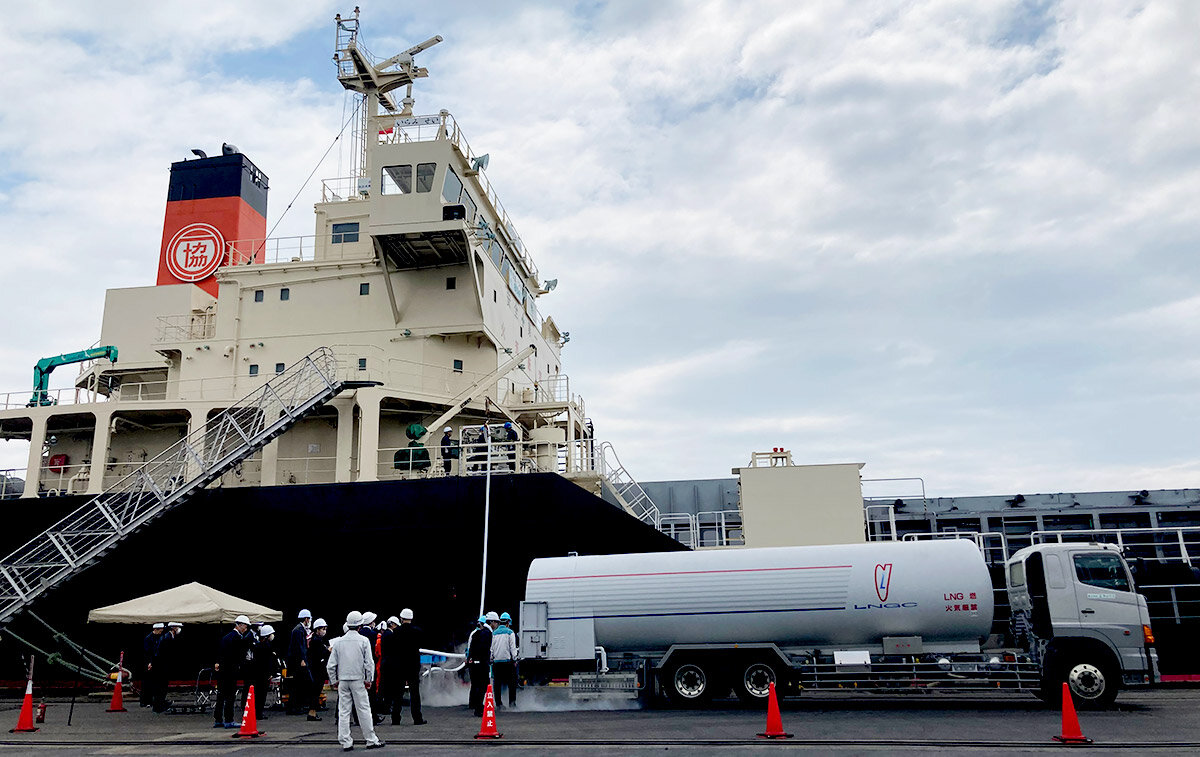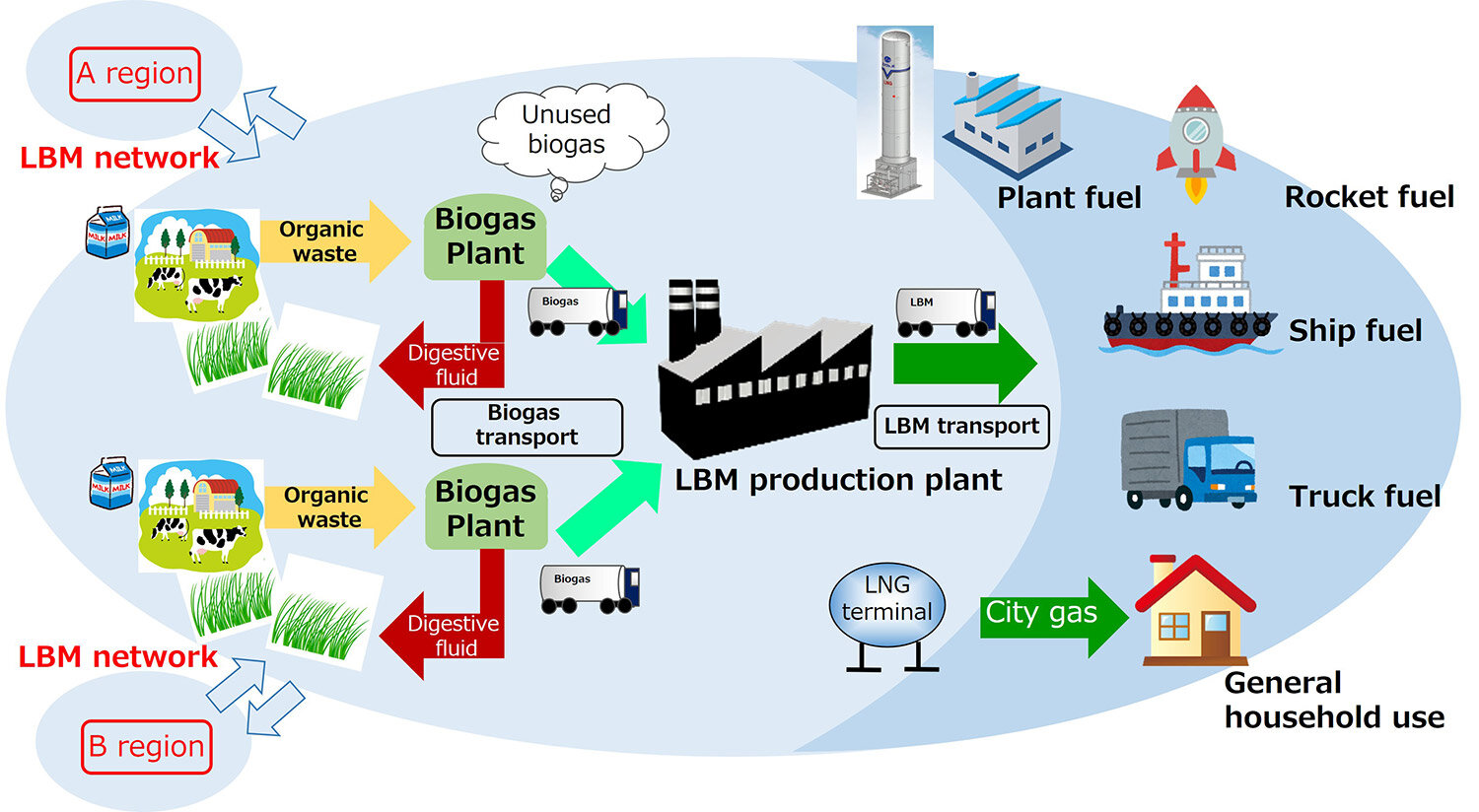Achieving Net Zero Emissions in Ocean Transport
A group of seven companies announced on Wednesday (Jun21) the completion of a successful trial using liquefied bio-methane (LBM) (Note 1) derived from cattle manure as marine fuel on the domestic LNG-fueled vessel Ise Mirai (Note 2) in Ise Bay. This marks Japan's first use of carbon-neutral LBM derived from biomass.

Teaming up on the project were Mitsui O.S.K. Lines, Ltd. (MOL), Air Water Inc. (Air Water), Techno Chubu Company, Ltd. (Techno Chubu), Kyoudou Kaiun Co., Ltd. (Kyoudou Kaiun), MOL Coastal Shipping, Ltd. (MOL Coastal Shipping), Cenergy Co., LTD (Cenergy), and IHI Power Systems Co., Ltd. (IHI Power Systems).

The trial was conducted based on a memorandum of understanding (MoU) signed between MOL and Air Water in February 2023, with the cooperation of other parties involved, as follows:
- Shipper: JERA Co., Inc.
- Carrier: Techno Chubu
- Operator/Shipowner: Kyoudou Kaiun (Joint shipowner: Techno Chubu, MOL Coastal Shipping)
- Truck transport: Cenergy
- Bunkering operator: Cenergy, Kyoudou Kaiun
- Engine manufacturer: IHI Power Systems
In the trial, Air Water supplied LBM produced from cattle manure in the Tokachi region of Hokkaido as part of a technology development and demonstration project adopted by Japan's Ministry of the Environment. All the parties involved confirmed the following through ocean transport of JERA's cargo.

- LBM can be transported through the existing domestic LNG supply chain.
- Truck-to-ship bunkering (Note 5) of LBM can be completed using existing LNG tank trucks.
- LBM can be used by existing vessel (Ise Mirai) as marine fuel.
LNG fuel is expected to reduce carbon dioxide (CO2) emissions by about 25% compared to conventional fuel oil, but further reduction of CO2 emissions can be expected through the partial use of LBM, a carbon-neutral energy source. In addition, because the main component of both LBM and LNG is methane, the existing LNG supply chains can be used, so LBM can be an effective solution to achieve low-carbon and decarbonized ship operations.
MOL and Air Water will continually contribute to the development of low-carbon and decarbonized ocean transport by leveraging each other's knowledge and experience in the use of LBM as marine fuel.
(Note 1) LBM is made with bio-methane generated from dairy-owned biogas plants, liquefied at about -160°C, separating and refining its main component, methane. Methane can be compressed to 1/600th of its volume when liquefied, enabling it to be transported on a large scale. It is also a carbon-neutral domestic energy source because it is made from cattle manure.
(Note 2) The vessel was jointly built by MOL Coastal Shipping, Techno Chubu, and Kyoudou Kaiun, and was delivered in December 2020. It is the first LNG fueled ocean cargo vessel in Japan. It was built with support from Japan's Ministry of the Environment and the Ministry of Land, Infrastructure, Transport and Tourism under the "Model Project for Reducing CO2 Emissions from Ships through the Use of Alternative Fuels" aimed at demonstrating technology to optimize combustion efficiency in LNG-fueled gas engines and supply systems, with the aim of significantly reducing CO2 emissions from ships.